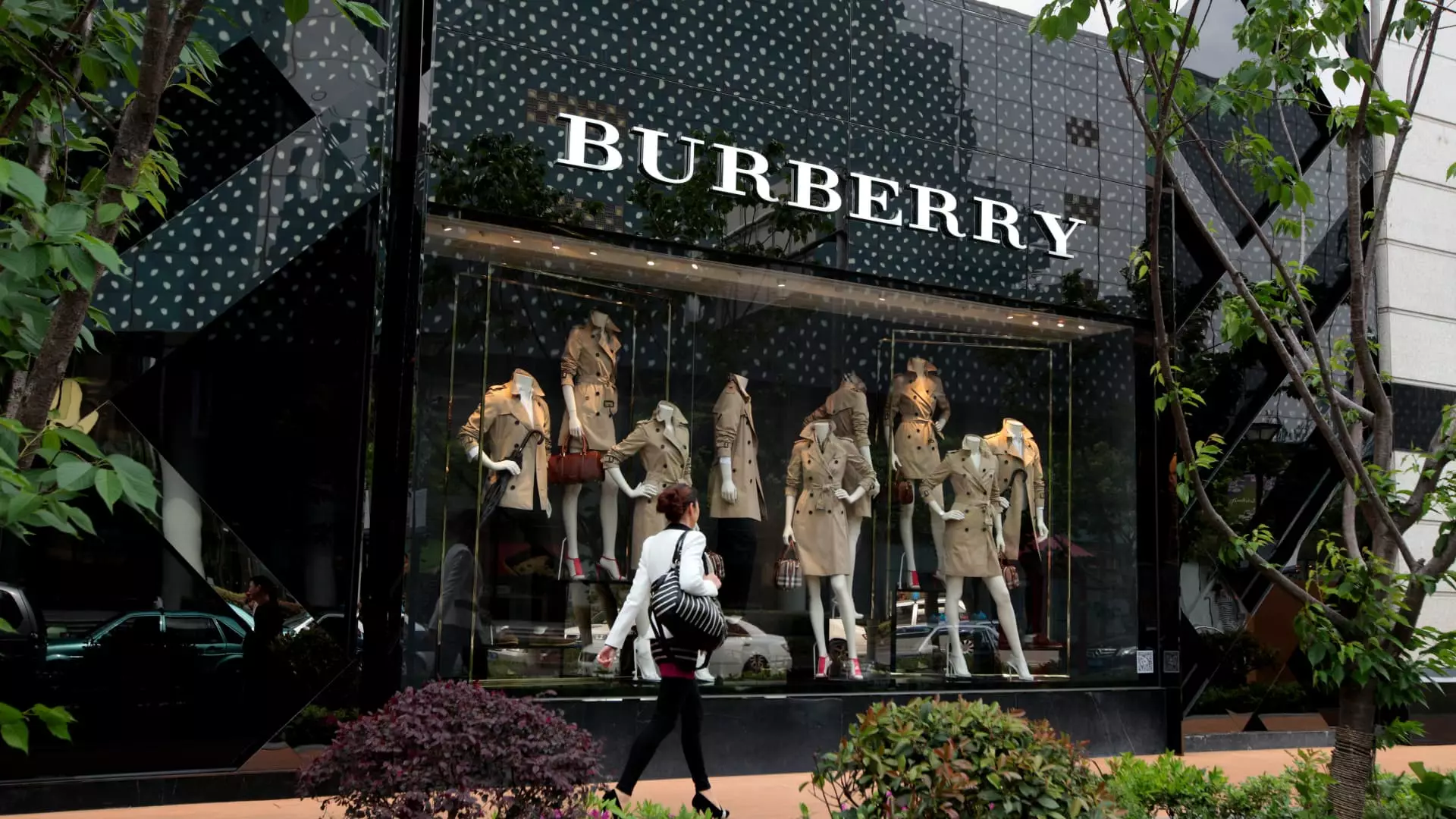In a decisive move to rescue its brand image and financial performance, Burberry has unveiled an ambitious strategic plan, “Burberry Forward”. This initiative reflects a clear intent to return to the luxury house’s roots by emphasizing its signature designs, particularly its iconic outerwear and classic scarves. Facing significant challenges in sales and brand perception, Burberry’s recent efforts come at a time when the broader luxury market is experiencing notable turbulence. With a dramatic 22% surge in stock prices following the announcement, it is evident that the market sees potential in Burberry’s new direction. Nevertheless, the company has seen its stock plummet by roughly 39% year-to-date, illustrating the uphill battle that lies ahead.
The brand’s new CEO, Joshua Schulman, acknowledges that Burberry’s appeal has waned partly due to a diversion away from its traditional offerings. In his statement, Schulman highlighted the need for the company to recalibrate its focus—moving past niche products that alienated its core customer base towards the heritage items that initially made the brand a household name. This shift signifies a return to a more disciplined product selection strategy, allowing Burberry to not just stabilize its business operations but also reconnect emotionally with its customers. Analysts agree that this renewed emphasis on heritage pieces represents a much-needed correction in Burberry’s strategic approach.
Burberry’s troubles mirror broader systemic issues within the luxury goods sector. The expected contraction of approximately 2% in the personal luxury goods market underscores a challenging economic environment. While the consumer appetite for luxury items has faced headwinds, Burberry’s struggles may also stem from deeper issues, including inconsistency from leadership—making Schulman the fourth CEO within a decade. Each leadership transition has brought its misalignment in brand vision, leading to disconnection from consumer preferences.
The historical context surrounding Burberry’s pricing strategies and the perceived divergence from market positioning has also perplexed analysts. Critics have suggested that the brand’s elevation strategy, particularly concerning leather goods, has caused a misalignment between its pricing and consumer expectations. Schulman’s strategic overhaul aims to rectify this by restoring balance and authenticity to the brand’s offerings, which may contribute to a reenergization of sales.
Market analysts have received Burberry’s strategic pivot with optimism. With expert voices weighing in, Piral Dadhania from RBC Capital Markets posits that focusing on heritage and outerwear could cultivate a unique niche for Burberry, distinguishing it from hyper-competitive segments by leaning into authenticity. Mamta Valechha from Quilter Cheviot reiterates this sentiment, describing the repositioning as a transformative moment after a prolonged period of turbulence for the brand, suggesting that Lauran Schulman’s leadership might usher in a new era of resilience.
Investment firms like Bernstein have taken notice, upgrading their ratings on the luxury brand following Schulman’s appointment. Their assessments reflect a growing consensus that the new leadership brings a promising outlook. The anticipation of significant changes spanning product design, pricing structures, distribution channels, and marketing strategies indicates a comprehensive reformative approach under Schulman.
A critical factor in Burberry’s ability to thrive amidst these changes will be the collaborative efforts between Schulman and the creative team. As pointed out by Yanmei Tang from Third Bridge, the bond between business strategy and artistic vision is pivotal. Schulman needs to embody a balance between the business-driven objectives of profitability and the creative authenticity that has long characterized Burberry. Drawing inspiration from brands like Louis Vuitton, which skilfully blends exclusive, artistic offerings with recognized, accessible pieces, may offer a blueprint for Burberry.
While Burberry’s road to recovery may be fraught with challenges, the brand’s aggressive move towards drawing upon its rich heritage could very well pave the way for a rejuvenated identity in the luxury market. The forthcoming phase of Burberry’s evolution depends profoundly on how effectively it can integrate its historical strengths with contemporary market demands, ultimately restoring its luster in an increasingly competitive landscape.

Leave a Reply